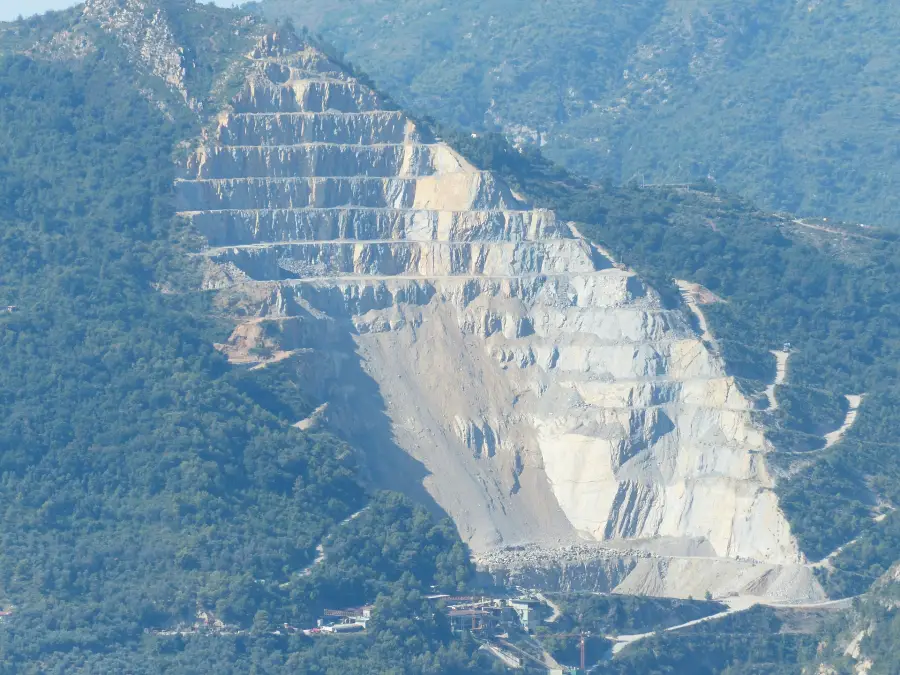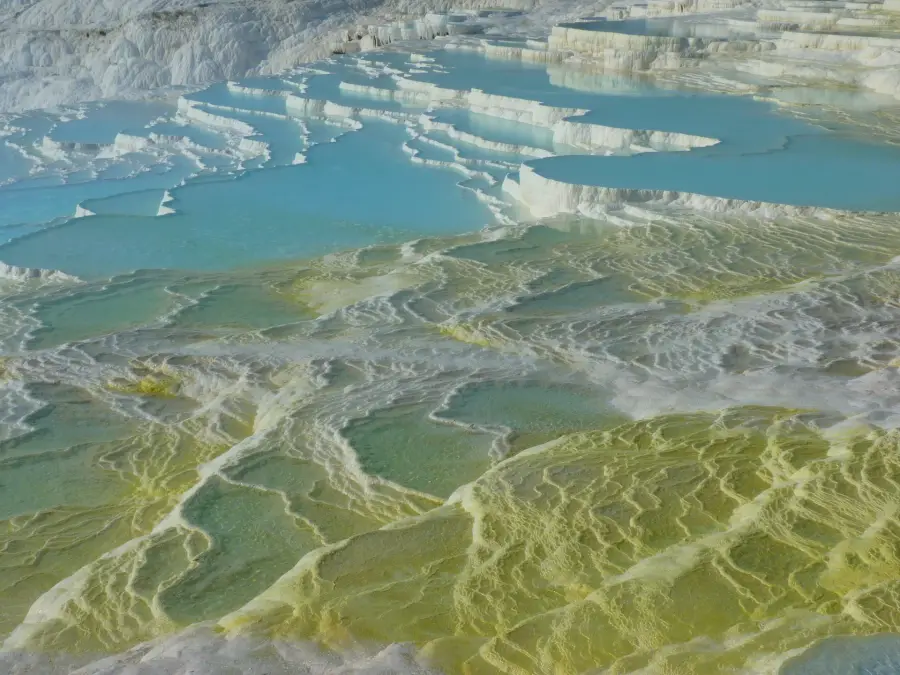Lime is one of the most commonly used soil additives used in landscaping and agriculture. As an alkaline substance, it is key for regulating overly acidic soils and, in turn, promoting an environment that is conducive for healthy soil microbes and plants.
Pelletized lime is a mechanically granulated version of powdered lime you normally find at a local hardware store. Whereas fast acting lime is usually a calcium carbonate based product that breaks down and is absorbed by your lawn faster. Pelletized offers a more controlled absorption.
That said, there are a few different categories of “lime”, and today we will focus on two of them: pelletized and fast-acting. What are the properties and uses of each? Is there a difference? Let’s find out.

Contents
Is Pelletized Lime Fast Acting?
Let’s start by establishing what pelletized lime is exactly.
“Lime” is a term that has become somewhat generic and used to refer to various limestone-derived products.
Pelletized Lime is Fast Acting Lime if the right conditions are met. The transportable and easy to store pellets must have adequate water to break down the compacted shape in order to disperse into the soil. Without proper water pelletized lime is slow acting, but with it it is fast acting.
These products vary in terms of lime concentration but they are generally used for one main purpose…regulating soil pH levels.
Soils are prone to rises in acidity due to rainwater leaching, excessive nitrogen fertilizer application, and carbon dioxide from microbes breaking down organic matter. As a result, it becomes harsh to plant roots, which often favor moderate acidity/alkaline balances.
Limestone is alkaline in nature, so dissolving it into the soil will help raise soil pH levels. It is also widely available, which makes it (and its derivative products) affordable for manufacturers to feed an ever-growing demand for soil adjusters.
What Is Pelletized Lime?
Later we will discuss the nature of ‘fast acting’ lime, but first let’s look at the pellet version. What is it that makes pelletized lime what it is?
“Pelletized” lime is derived from ground-up limestone, which is also known as “powdered” lime. Pellets are created from powdered lime to aid in shipping, storage, and coverage estimations. The only difference in these two type of lime is found in form not substance.
Powdered lime has the highest possible surface area for dissolution, so it is the quickest way to unlock the acid-countering benefits.
However, powdered lime presents some problems, especially when it comes to shipping. Powdered lime can also cause problems when it comes to estimating quantities.
Such problems are why pelletizing exists. This process of turning powdered lime into granular pellets helps improve handling and application estimations greatly. Pelletizing involves pouring powder into an apparatus known as a disc granulator (or disc pelletizer). A granulator can convert up to 95% of powder into pellets.
How Long Does It Take For Pelletized Lime To Start Working?
The best part of pelletizing is that you don’t lose out on any of the benefits of powdered lime. The pellets break down very easily, especially in water.
The dissolution of pelletized lime once water is added does not take much longer than powder form lime. The time it takes for soil to reach its maximum pH change after applying pelletized lime is in the range of around 3 months or 90 days. Smaller effects can be seen much sooner.
By controlling the moisture levels, you can also control the rate at which the lime adjusts the soil pH. Powder simply cannot give you the same degree of control, although adding water will speed things up as well.
So, to answer the original question, pelletized lime is fast-acting…provided conditions are ideal for it to be. Powdered lime, on the other hand, is fast-acting regardless of the soil conditions.
Lime pellets are ideal for those looking for the best of both worlds. Maybe you have one patch that needs quick pH adjustment and another that could do with a slow release. You could easily control moisture conditions in each patch to get your desired results.
Additionally, rough quantity estimates are much more accurate with pellets so you can avoid wastage.
With effective application, you will notice sturdier and more vibrant plants. This is due to the increased availability of soil nutrients as well as increased nutrient absorption. Soil microbes and enzymes also tend to favor a slightly alkaline pH for the most part.
Successful soil adjustment will also lead to the spread of nutrients further underground. This will be proved by larger and deeper root systems. These enhanced roots will also help hold soil in place and minimize erosion as well as the formation of soil crust. In essence, the roots will help keep the soil tilled.
My suggestion for the easiest ‘fast acting’ lime is Pennington Fast Acting Lime Soil Amendment. For the simplest and most cost effective pelletized version, I would use Hoffman Pelletized Garden Lime (Amazon linked for your convenience).
For more great articles like this one, see my others here…
- Can You Grow Plants In Glass? – (Jars, Containers, Bottles)
- How Long Does It Take For Soil And Grass To Dry? (Revealed)
- How To Deal With A Dandelion Infestation
What Is The Difference Between Pelletized Lime And Fast Acting Lime?

Everything you need to know about “fast acting” lime is in the name. It is made for the immediate release of its soil adjustment qualities.
Fast-acting lime is just the marketing buzz term for highly ground limestone. This powdered limestone is the quickest way to regulate boost soil alkalinity. Essentially Fast Acting Lime is a more processed version of powdered limestone. Pelletized has this similar powder in pellet form.
Like with lime pellets, fast-acting lime formulas can be based on calcium carbonate or magnesium carbonate. The former is for soils lacking in calcium while the latter helps increase soil magnesium levels. You should carry out periodic soil tests to determine what your soil needs.
As we’ve already highlighted above, pelletized lime is for people who want to regulate the rate at which alkalinity is added to the soil. However, due to the slower dissolution of pellets, you might have to use slightly greater quantities per given area.
Fast-acting lime’s rapid dissolution, on the other hand, also makes it more efficient for coverage. You can use much less powdered lime for a given area.
In fact, a study carried out at the University of Georgia compared various magnesium carbonate derivatives to see which one was the most efficient in terms of area coverage.
For the best results using coarse agricultural lime, the study found 90-100 pounds per 1000 square feet to be ideal. However, when it came to powdered lime, 60-65 pounds was found to be more than adequate.
Calcium carbonate formulas typically dissolve faster than their magnesium carbonate counterparts. Calcium carbonate lime also has far greater coverage efficiency. In fact, you can use as little as 10-15 pounds of it per 1000 square feet of lawn!
For Large Scale Applications
Those numbers point to the incredible savings you can make with fast-acting lime, especially at an industrial scale.
Of course, applying lime at an industrial scale presents its own challenges. Pelletized lime can be applied fairly easily using a spreader, which is a big advantage over fast-acting lime.
Additionally, pelletized lime is less likely to be blown in undesired directions by the wind, nor is it as dusty as fast-acting lime. This dust makes transport and handling cumbersome for the people involved.
For Small Scale Applications
As for small-scale applications, such as home lawn maintenance, fast-acting lime may be the best way to go. Lawns are typically very responsive to soil changes so you can almost immediately assess the impact of your lime application.
Fast-acting lime products are also great for limiting patching and weed growth in lawns. A lot of manufacturers are also incorporating new technologies to help their products facilitate better soil nutrient retention.
All in all, apart from the logistical and application differences, pelletized and fast-acting lime are pretty similar since one is just a more processed version of the other.
So, Is Fast Acting Lime Better?
Which is the better option for your job? Is powdered, fast acting, or pelletized lime better for your situation?
Fast Acting Lime is better for jobs where more immediate results are desired and less exact controls on the pH are needed. This also applies to smaller jobs with less area to cover. Larger jobs and those needing more gradual pH adjustments will be better suited for pelletized lime.
So, this is yet another example of asking a question and getting the infamous ‘it depends’ for an answer. Though, I can simplify it for most homeowners thinking of using a pH control in their yards. Pelletized lime will for most homeowners be the way to go. It is easy to buy, transport, and store.
Fast acting formulas are more hype than useful and powders usually end up all over your shed, garage, or basement floors. Pelletized for most consumers will be the go to version of lime to gradually change your pH levels.
The Final Touches On Pelletized Vs Fast Acting Lime…
All in all, lime is a simple product with predicable results. Fast acting has become a more commercial term even though some formulas may be based on slightly faster absorbed base materials. (Think – ‘New And Improved’ and ‘Fortified’ in many advertisements) The time frame is only slightly different and the results are fairly similar.
The real thing to look at is the control that pelletized lime offers. It is slower release, easier to transport, easier to spread, and storage is no contest. Powders are best left to professionals and contractors with work trucks, proper storage, and who are used to staying dirty from dawn till dusk.
Some other great articles you will like…
- Mafia Or Bunker Block Masonry Retaining Walls (Explained)
- Does Roundup Expire Or Have A Shelf Life?
- Watering Plant Leaves Benefits: Mist Em, Spray Em, Soak Em
References
